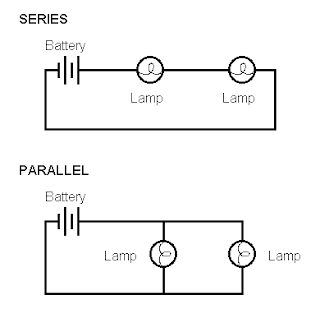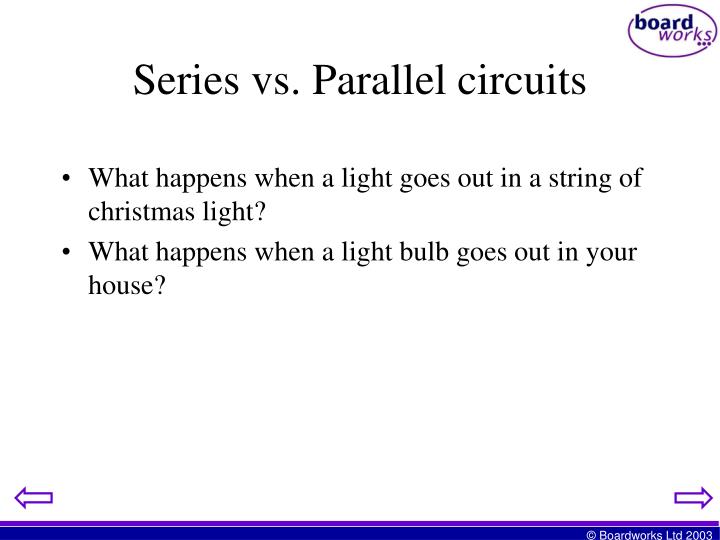
#Series vs parallel serial
Windows 95 and Windows 98 are examples of operating systems which do the serial processing. Pentium 3 and Pentium 4 are serial processing computers.
#Series vs parallel series
In this case, all tasks of the different programs are sent to the processor through registers and processed sequentially. With series wiring, the output of one pickup goes into the input of another pickup, while with standard parallel wiring, each pickup takes its own path to the. In an operating system, there may be running multiple programs and each program has multiple tasks running. Note that one processor complete one task at a given time and other tasks wait in a queue. This type of processing is also known as sequential processing.Įxample of serial processing operating systemĪny operating system running on the single processor is an example of the serial operating system.

Similarly, processor get lists of tasks and each task is completed at a time and all other tasks wait till the first one completes. Suppose there are two queues of people and one cashier is handling both the queues then one person can get a ticket at a time from both queues. That does make sense series should potentially double the voltage. I dont know too much about specifics, but it doesnt really appear to change my tone too much going between the two, but it does get noticably louder and more pronounced in series mode. Parallel wiring gives 1/4 the resistance and inductance of series wiring, resulting in more current, and therefore more heat generated. Juneau said: Series is louder than parallel usually is the biggest difference I can tell. A parallel-wired motor typically maintains its (lower-than-series) torque to a higher velocity. In this case, one person can get a ticket at a time. A series-wired motor will deliver more stall torque, but torque drops quickly as velocity increases. In real time example, people standing in a queue and waiting for a railway ticket. The initial charge on the capacitor plate is 10mC. An LC circuit consists of an inductor of L 20mH and a capacitor of C 50F. Current in the circuit, i V/Z 120/60 2 A.

Therefore, total impedance, Z X L X C 113 53 60 ohm. If, however, you wire your panels in parallel, your output voltage will remain 18V, but your output current will double. Putting the given value of L and C we get, X L 113 ohm.

If you wire them in series, you’ll be getting an output voltage of 36V (18V x 2) while the output current will remain 6A. A processing in which one task is completed at a time and all the tasks are run by the processor in a sequence. For example, let’s say you’re wiring up two solar panels and each panel has an output of 18V/6A.


 0 kommentar(er)
0 kommentar(er)
